Oral History with Eddie Acena
In this excerpt from his 1975 oral history, Eddie Acena describes his experience being a Filipino immigrant in Seattle during the Great Depression. Mr. Acena was born in 1906 in Vigan City in the Philippines and immigrated to the U.S. in the 1920s to go to school. Mr. Acena was interviewed here by Mr. Bob Flor.
Mr. Flor: So, you worked with a white contractor.
Mr. Acena: I work[ed] with Chinese contractor.
Mr. Flor: Oh, Chinese contractor.
Mr. Acena: Chinese contractor. See, there is only three or four Filipino suppliers there, but the regular contractor is Chinese or Japanese. Just only a secondhand contract.
Mr. Flor: So, it was better working for a Chinese.
Mr. Acena: Yeah, better. That's why I'm ... since then, I'm mixed with the Chinese.
Mr. Flor: So, then after that, you went back to school?
Mr. Acena: Yeah, about ... I go back to school, September. Then go back to St. Martin again 1929. Then Depression time, you cannot get nothing, you know. I would like to go here in Washington, but tuition is $50, and it's hard to get $50 that time. You pay streetcar fare, I think was 3 for 25¢.
Mr. Flor: What was it like in the Depression?
Mr. Acena: Well, people were depressed you know, lots of people ... they used to have a bread line where people go line up and eat. They don't give you anything, but they eat. Like one in between King Street ... where that Acme Poultry there now. They used to ... lots of people in line go eat, you know.
Mr. Flor: Some, that was mostly Filipinos?
Mr. Acena: Filipinos, all kinds. At that time, they were very few colored in there. The only district for colored ... in Madison and 23rd.
Mr. Flor: Where did you stay at that time when you were back here in Seattle during the Depression? You stayed with your cousins?
Mr. Acena: Yeah! I stayed with my cousin, we rent a house in there 411 ... the same. Then later on we moved to Marion Street just across the old building of Seattle University.
Mr. Flor: That's where most of the Filipinos ...
Mr. Acena: Yeah, yeah, that's where most of us stayed before.
Mr. Flor: Did they have the Student Club House, or something like that?
Mr. Acena: No, no, but they used to have the Student Club House here in the Catholic Club, that's where we used to have a little gathering every weekend.
Mr. Flor: What did you do during those times?
Mr. Acena: Oh, well, at that time sometimes you know, at that time I worked here in the Seattle General Hospital for a while running the elevator, by hand.
Mr. Flor: That was during the Depression?
Mr. Acena: Yeah, Depression. But in the summertime, we go to Alaska.
Mr. Flor: Did you get involved in the unions?
Mr. Acena: Oh yeah.
Mr. Flor: How?
Mr. Acena: One of the contractors spying on the other side, when they call me, you know, and then report to the union, you know. We used to have that CIO, you know, Local 7. That's against the AFL. So, I am one of the pioneers on that.
Mr. Flor: Which one did you belong to?
Mr. Acena: Oh, Local 7, CIO. See, when they win the council election, and have this contract on this industry, then that's the time I went to California after the Alaska time and stay on the farm there for a while. Then come back in the summertime.
Mr. Flor: So, you just migrated.
Mr. Acena: Yeah. I just go back and forth here.







